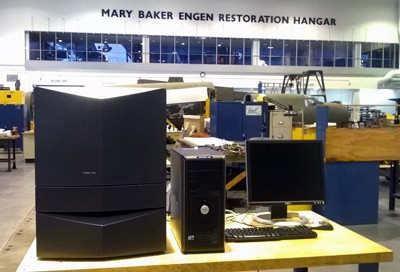Helping to preserve the aviation heritage of the United States
25/11/2014

The National Air and Space Museum – the Steven F. Udvar-Hazy Center in Chantilly which is part of the esteemed Smithsonian Institute - recently took delivery of a Hidex 300 SL Liquid Scintillation Counter to help them in their restoration work.
The facility, consisting of two huge hangers, displays thousands of aviation and space artifacts including a Lockheed SR-71 Blackbird, a Concorde and the space shuttle Discovery. The Center is also home to the Mary Baker Engen Restoration Hanger where preservation of the National Air and Space Museum’s collections takes place. The facility is spacious enough to accommodate several aircraft at one time, giving the restoration specialists the room and equipment required to reconstruct, repair and preserve artifacts. This hanger also houses numerous support shops where the museum staff can complete the many specialised functions necessary to preserve the collection.
The 300 SL supplied to the museum has the Alpha Beta separation option which is perfect for the work it is required to undertake. It is used primarily for wipe testing radium - an alpha emitter - and radon which can be found in the instrument and indicator dials of many of the warplanes.

3D Topograph, unique to the 300 SL, makes visualising the alpha's and beta's easy for all the facility's staff.
Using luminous radium paint in the production of dials was first used around 1910. The coating process included the incorporation of radium mixed with a phosphor. As the radium emitted its radiation, the phosphor glowed, giving the desired ability to read the instruments at night without lighting.
Although health problems in workers applying radium paint to watch and clock dials were noticed in the late 1920s, radium paint continued to be used - mostly because a suitable substitute was simply not available. So military authorities continued to specify radium based paint for important applications such as compasses, instruments, gun sights as it not only proved a beneficial for night operations, but also to the overall war effort. However, by the 1950s it was realised that the dangers to health were significant and radium paint was phased out.
This abandonment has not eliminated the plethora of radium-laced instruments still existing in the field though. Indeed, whilst the phosphor in the dials may have long since lost its glow, the radium is still decaying. With a half-life of 1,599 years, the radium will continue to provide a low dose of radiation exposure to anyone in close proximity to one of these legacy devices.
There are certainly many of these devices within the museum’s collection, which is where the 300 SL comes into its own, helping the specialists to complete these restoration projects safely for the public to enjoy.